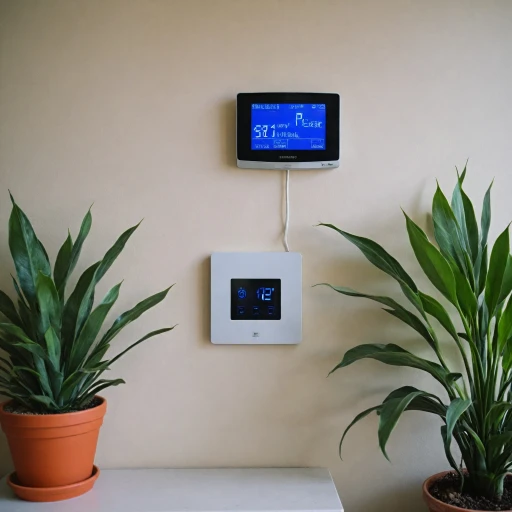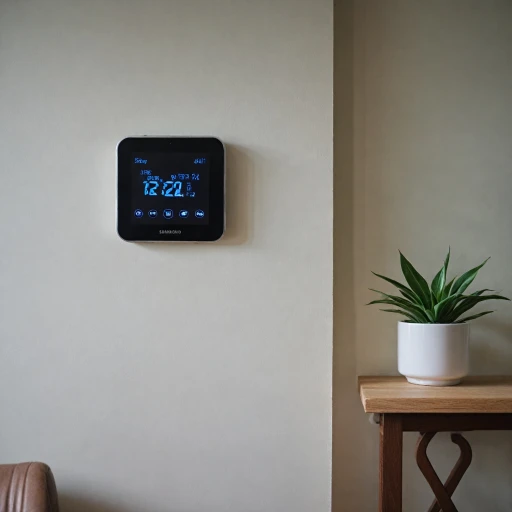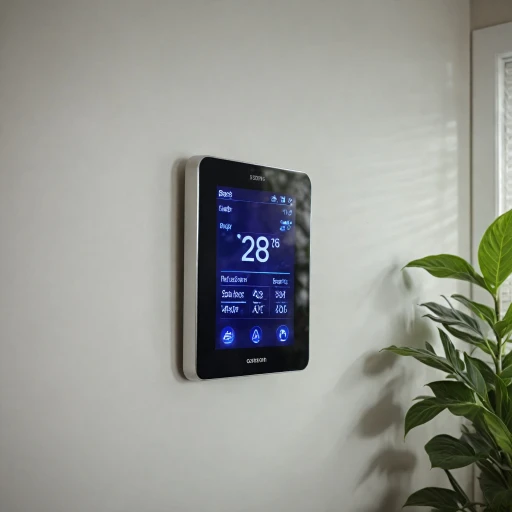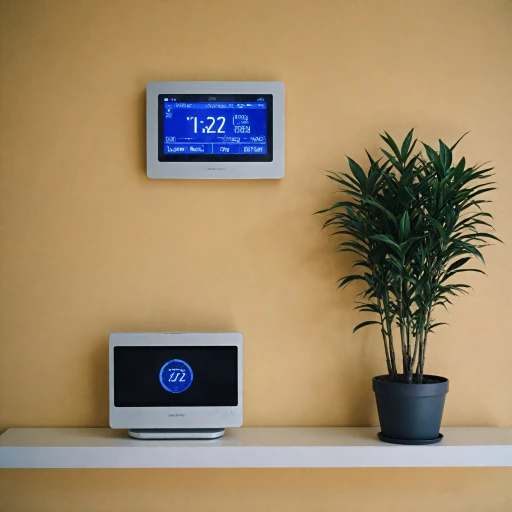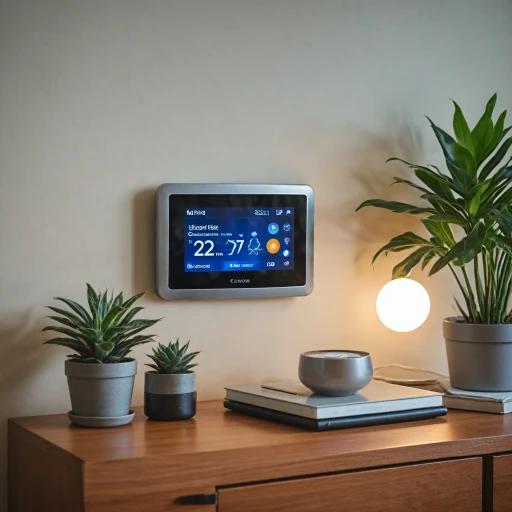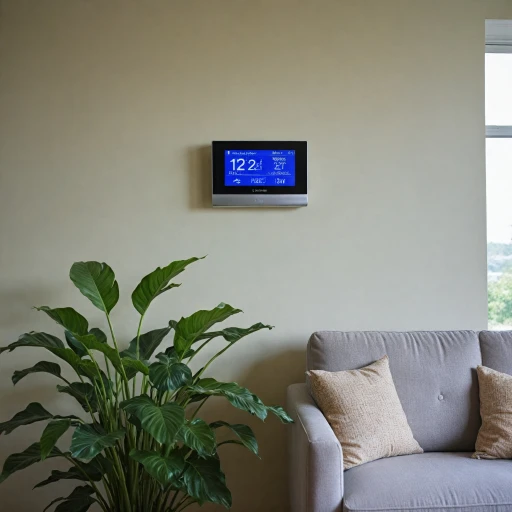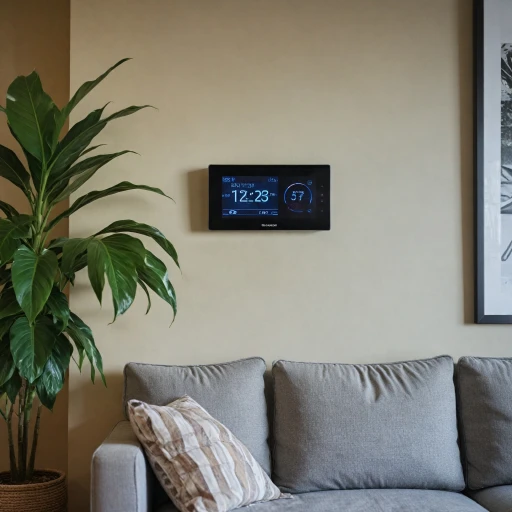
Understanding Wireless Thermostats
Unveiling the Basics of Wireless Thermostats
Wireless thermostats have become an integral part of modern smart homes, providing a convenient and efficient way to manage heating and cooling systems. These devices make it possible to monitor and adjust the temperature in your living space remotely, contributing to energy savings and enhanced comfort. Wireless thermostats function by connecting to your home network, allowing users to control the temperature from their smartphones or via voice assistants like Amazon Alexa or Google Nest. This connectivity enables both local and remote access, ensuring you can adjust settings no matter where you are. Several leading brands offer wireless thermostat models, including Ecobee, Nest, and Amazon, each featuring unique capabilities. While Ecobee smart thermostats are known for their integration with other smart home devices, Nest products often emphasize learning algorithms to predict your heating patterns. Understandably, comparing wireless thermostat brands is critical to finding the best fit for your household needs. One of the appealing aspects of these smart devices is their ability to save energy by optimizing heating schedules according to your routine. This adaptability, combined with programmable features, allows users to customize settings, ensuring that heating or cooling is only active when necessary. Furthermore, wireless thermostats often come with premium features, such as Energy Star certification, ensuring energy efficiency standards are met. Also, increasingly, these products offer smart security measures, keeping your investment safe from external threats. While they offer significant advantages, implementing wireless thermostats can come with challenges, particularly for those unfamiliar with smart home technology. However, most premium models like the Ecobee or Nest provide intuitive interfaces designed to help users overcome any initial hurdles. For those seeking more insight, check out this smart choice for modern homes that may guide your decision. With advancements in technology, wireless thermostats continue to evolve, promising more integrated and intuitive solutions in the future, with an extensive influence on how households manage their energy usage.Advantages of Wireless Thermostats
Unlocking Potential: The Advantages of Going Wireless
Switching to a wireless thermostat is more than just keeping up with technology trends; it's about truly optimizing your living environment. A wireless thermostat offers unmatched convenience and efficiency that traditional models simply can't provide. One of the standout features is the ability to control your heating and cooling systems remotely. With options like Google Nest, Ecobee Smart, and other premium products, you can adjust your home’s temperature from anywhere using a smartphone app or a voice command through devices like Amazon Echo or Alexa. This not only adds convenience but also contributes to energy saving. Wireless thermostats are programmable, allowing homeowners to schedule their heating and cooling to fit their daily routines. These smart thermostats can learn from your habits and make automatic adjustments, improving comfort and reducing waste. With energy star certified products like the Ecobee or Amazon smart thermostats, users can achieve even greater efficiency, contributing to a more environmentally friendly home. Moreover, these devices can integrate with smart home systems, providing more unified control over your household. As more smart security and other devices connect wirelessly, having a central control point like a smart thermostat streamlines their management. For those interested in exploring a specific model known for its smart features, check out this in-depth look at the Emerson Sensi Wi-Fi Thermostat. Investing in a wireless thermostat is an investment in a smarter, more efficient home. Not only does it offer luxury and ease, but it's also designed to help homeowners save energy and reduce costs in the long run.Challenges in Implementing Wireless Thermostats
Overcoming Installation and Compatibility Hurdles
Implementing wireless thermostats in your home can be a rewarding experience, but it comes with its own set of challenges. One of the primary concerns is ensuring compatibility with existing heating and cooling systems. Not all systems are designed to work seamlessly with smart thermostats, such as the heat pump thermostat, which can complicate the installation process.
Connectivity and Signal Issues
Wireless thermostats rely heavily on a stable internet connection to function optimally. Issues with Wi-Fi connectivity can lead to disruptions in the ability to control the thermostat remotely. This is particularly problematic in larger homes where the signal may not reach all areas effectively. Investing in a reliable router or Wi-Fi extender can help mitigate these issues.
Security Concerns
As with any smart home device, security is a significant concern. Wireless thermostats, like the Google Nest or Ecobee Smart, are no exception. They can be vulnerable to hacking if not properly secured. Ensuring your network is protected with strong passwords and regularly updated firmware is crucial to maintaining the security of your smart thermostat system.
Cost and Investment
While wireless thermostats can help save energy and reduce heating and cooling costs over time, the initial investment can be significant. Premium models, such as those from Amazon or Ecobee, come with a higher price tag. It's important to weigh the long-term savings against the upfront cost to determine if the investment is worthwhile for your specific situation.
Learning Curve and Usability
For those not tech-savvy, the learning curve associated with smart thermostats can be daunting. Understanding how to program and control these devices, whether through Alexa, Google Nest, or Amazon Echo, requires some time and patience. However, once mastered, the convenience and efficiency they offer can greatly enhance your home's comfort and energy management.
Comparing Wireless Thermostat Brands
Evaluating Top Wireless Thermostat Brands
When it comes to choosing a wireless thermostat, understanding the distinct features and benefits of each brand is crucial. Leading the charge in this space are brands like Google Nest, Ecobee, and Amazon Echo, each offering unique features that cater to different needs.
Google Nest is widely recognized for its intuitive design and seamless integration with smart home systems. Its learning capabilities allow it to adapt to your schedule, optimizing heating and cooling for efficient energy use. The Google Nest thermostat works effortlessly with numerous platforms, providing a comprehensive smart security environment that enhances user convenience. As a smart thermostat that is Energy Star certified, it promises not only comfort but also helps save energy.
Ecobee Smart Thermostats offer a compelling alternative with their emphasis on whole-home sensing capabilities. By placing room sensors throughout the house, Ecobee devices provide balanced heating and cooling, enhancing overall household energy efficiency. An added benefit is their compatibility with various voice assistants, including Alexa, making them a versatile choice for those seeking advanced control over their home environment. The Ecobee smart thermostat's ability to integrate with other products helps optimize temperature settings for both comfort and energy savings.
Meanwhile, Amazon’s Smart Thermostat enters the market with a promise of simplicity and effectiveness. Designed to integrate smoothly with Amazon Echo devices, it offers another layer of smart control over home temperatures. Its user-friendly interface and programmable thermostat features offer homeowners a reliable solution to reduce energy bills without sacrificing comfort.
Despite the premium price tags associated with these products, the long-term savings on energy bills often justify the initial investment. Features like programmable scheduling, real-time data access, and remote management via apps are standard across these top brands, allowing users to learn and fill gaps in their energy usage patterns efficiently.
Whether you are drawn to the advanced technology and energy efficiency of the Google Nest, the comprehensive home monitoring of Ecobee, or the simplicity and integration capabilities of Amazon's offering, the choice depends on your particular needs and existing smart home ecosystem. These wireless thermostats, by offering a stroke width balance of technology and practicality, are transforming the way we manage our homes' temperature and energy usage.
Integrating Wireless Thermostats with Smart Home Systems
Harmonizing Wireless Thermostats with Smart Homes
Integrating wireless thermostats into a smart home ecosystem offers a new level of convenience and efficiency. Here's how they fit in:- Seamless Connectivity: Modern smart thermostats like Ecobee and Google Nest connect effortlessly to various smart home systems. This seamless integration allows you to control your home's temperature through devices like Amazon Echo with voice commands.
- Unified Control Center: By centralizing control, smart thermostats offer a unique user experience where you can manage your heating and cooling alongside other smart devices. Using a single app or interface helps in maintaining a consistent home environment, optimizing overall energy use.
- Smart Security Features: Many wireless thermostats come with premium smart security options, contributing to the safety of your home. These protective measures work harmoniously with other smart home components to ensure a secure environment.
- Programmable Automation: The ability to set programmable schedules and routines is a standout feature. This not only provides comfort but also plays a significant role in saving energy. You can program your thermostat based on your preferences, ensuring that your home is always at an optimal temperature.
Future Trends in Wireless Thermostat Technology
Emerging Innovations Ahead
The future of wireless thermostats looks promising as technological advancements continue to unfold, enhancing the experience of managing home temperatures with greater ease and efficiency. These devices, such as the ecobee smart, Google Nest, and others, are continuously embracing innovations that resonate well with consumer needs and energy management.- Energy Efficiency Improvements: As the demand for energy-efficient household technology increases, the focus will continue to be on integrating energy star certified features. This enables homeowners to save energy and reduce costs, contributing to the growing trend of sustainable living.
- Enhanced Smart Home Integration: The capability to blend seamlessly with smart home ecosystems is a pivotal area of development. Integration with voice-controlled systems like Amazon Echo and Alexa is expected to become more streamlined, giving users more effortless control over heating and cooling systems.
- Advanced AI and Machine Learning: Future wireless thermostats might leverage artificial intelligence to learn user preferences even more intuitively. This smart temperature control could optimize and automate climate settings, anticipating changes in temperature requirements in a predictive manner.
- Security Enhancements: With an increasing number of programmable thermostats connected to the internet, strengthening smart security measures is vital. Innovations will likely prioritize protecting homeowners from potential vulnerabilities associated with wireless connectivity.
- Improved User Interfaces: As technology advances, developers aim to create more intuitive user interfaces, making these devices user-friendly for all. This could mean better integration with mobile apps or more accessible interfaces for individuals less technologically inclined.

